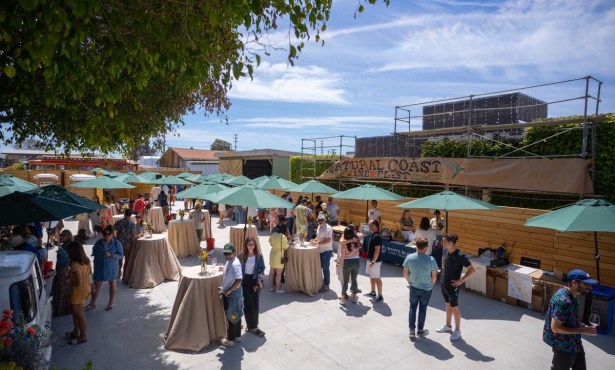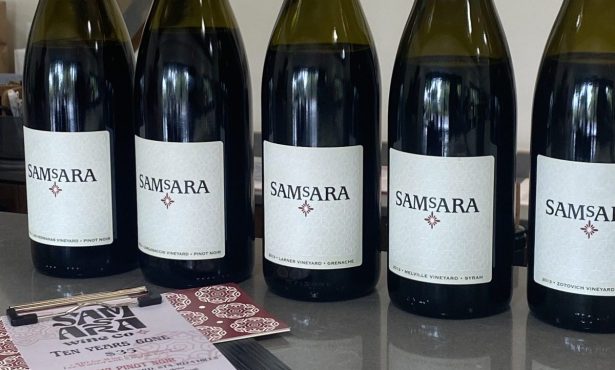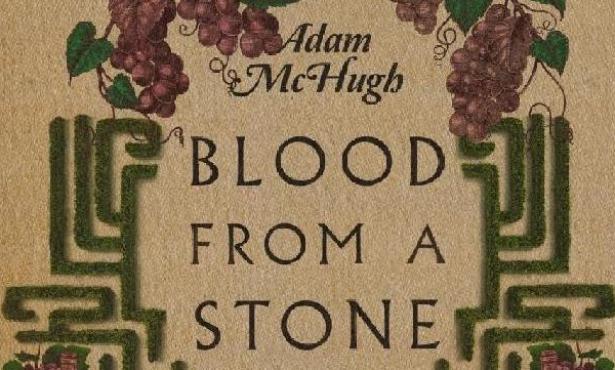Eight Wines Paired with Backyard Mesa BBQ
South African Sauv Blanc, White Pinot Noir, and More in Latest Office Tasting
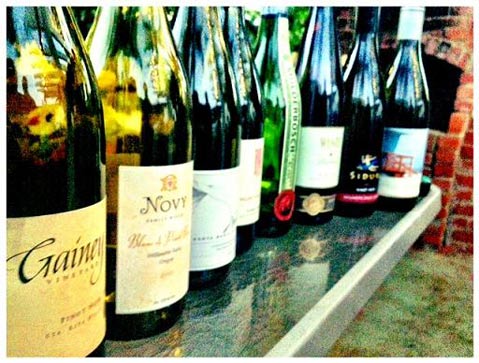
An impromptu early evening barbecue in a backyard on the Mesa last Friday proved the perfect pairing for a slate of eight wines that had recently been submitted to The Santa Barbara Independent for review.
Amid zesty bruschetta made with homegrown tomatoes, a cheese plate of Perrano, Humboldt Fog, and roasted garlic, and the ensuing grilled sausages, chicken drumsticks, shredded red peppers, beef sliders, and juicy steaks — not to mention a crunchy peach cobbler for dessert — about one dozen of us sampled through four white wines of different varietals and four pinot noirs, each from various regions.
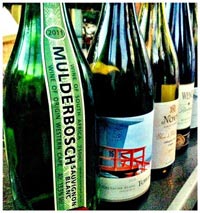
The tasting was semi-blind — differing bottles’ shapes and corkage methods tend to sometimes reveal too much info behind the yellow legal pad paper screens— the tasters ranged from wine industry professionals to proud neophytes, and the results showed what’s best about wine: Everyone liked different bottles best, many disliked what others loved, and there was a little something for everyone out of the eight wines, whether you liked mushroomy pinot noir or sweet tea-like riesling.
Here’s a bottle-by-bottle rundown.
White Wines
Mulderbosch Sauvignon Blanc 2011: “Good for the first after a long day at work and with two screaming children,” came the first review after we began sipping this South African wine, which now has a Santa Barbara connection, in that the winery’s new owner, Charles Banks, lives in town and once owned Jonata. Others commented: “crisp,” “grassy,” “citrus nose,” and “full bodied for a sauv blanc.” There was debate as to whether the wine had been oaked at all, but the notes explained that it saw no wood. Some thought chardonnay was added, but it turns out there is only 4 percent sémillon. The official tasting notes described the flavors very specifically, as in “Clementine peel, granadilla pulp, Cape Gooseberry, and melon.” We weren’t sure of what those things were, but we liked the wine nonetheless. mulderbosch.co.za. $15-$17
Tower 15 Grenache Blanc 2010: This is part of Pali Wine Co.’s Paso Robles-based, Rhone-focused side project Tower 15. We noted that it delivers a “very rich mouthfeel, like chewing on a pillow,” with some “mushy, powdery apple” scents. It was heavy and viscous on the tongue, with noticeable alcohol — “boozy” was said by more than one taster — although we probably should have served it much colder. tower15winery.com $18.50
Novy Family Winery Blanc de Pinot Noir Willamette Valley Oregon 2011: A white wine made from red pinot noir grapes is a pretty rare treat, so there was a lot of excitement going into this tasting. “Wow, that’s a different party in your mouth!” exclaimed one taster, with others quickly remarking on how it was “tart” and “tangy.” It was, as the winery’s website describes, like a sparkling wine without the bubbles, and would be best served with something buttery to be cut by the wine’s high acidity. Everyone appreciated the uniqueness of the wine, but it was not a unanimous favorite, being quite foreign to many palates. novyfamilywines.com $14
Wente Vineyards Riverbank Riesling 2011: Though there weren’t many sweet wine fans in our group, this off-dry riesling managed to please most by not being too syrupy or cloying. One compared it to “sweet tea” while others noted hints of pear with a happily lighter finish, which can be credited to the acidity retained by not allowing the stainless steel-aged wine to go through malolactic fermentation. Wente, which is based in the Livermore Valley in the eastern Bay Area, bills itself as the oldest continuously operating winery in the country; this wine comes from the Arroyo Seco appellation in Monterey County. wentevineyards.com $13
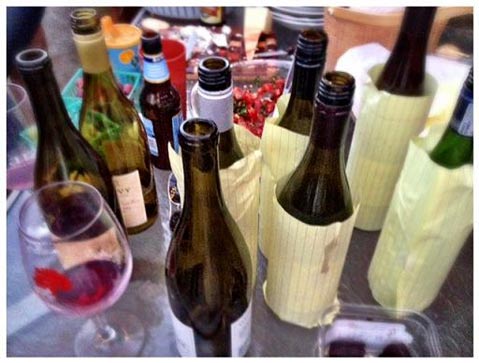
Red Wines
J. Wilkes Pinot Noir Santa Maria Valley 2009: “This is good,” came the first sipper, followed by “peppery nose,” “black pepper on the back end,” and “lots of minerals, earthy, mushroomy.” One taster would have wanted a longer finish, but the J. Wilkes — which the Bien Nacido Vineyards team continues to put out despite the untimely death of Mr. Wilkes a couple of years ago — is a great, tasty value, and offers a look at some of the richer pinots available in the Santa Maria Valley. jwilkes.com $24
Gainey Vineyard Pinot Noir Sta. Rita Hills 2010: A bit more “herbal” and “leaner” than the previous pinot, the Gainey offered a more complex and tannic pinot noir, and those who lean toward French pinots preferred this one. About half assumed that this was the Santa Maria Valley wine, as parts of Sta. Rita can be known for pretty juicy fruit, so there was surprise to learn that this was the Gainey from Evan’s Ranch. With former Rusack Winery winemaker John Falcone now in charge of Gainey, already good wines are likely to get even better, so invest wisely. gaineyvineyard.com $30
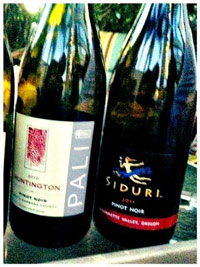
Pali Wine Co. “Huntington” Pinot Noir Santa Barbara County 2010: “Raspberry” dominated in this “fruit-forward” county blend of pinot noir, which people thought would go quite well with chocolate. In a typical exchange of our varied group, one person’s “too fruity” comment was smacked back immediately with, “Really? I like this one.” No matter what, though, this is a whopping value for just over twenty bucks, as Pali has mastered the mid-range pinot market while also banging out high-end single vineyard stars, too. paliwineco.com $21
Siduri Pinot Noir Willamette Valley 2011: I met Adam Lee of the renowned pinot house Siduri Wines at the Wine & Fire event celebrating the Sta. Rita Hills in mid August, and he sent a case of his wine my way to try. (The blanc de pinot by Novy is his winery, as well.) We’ll be running through his single vineyard pinots at one of these office tastings pretty soon, but I brought his Willamette Valley blend to set off against the Santa Barbara County samples. (Like Pali, Siduri makes a bunch of single vineyard bottlings in addition to regional blends.) Though visibly much lighter than the previous three pinots — which tends to be typical of Oregon’s cool weather — there were just as many distinct flavors going on as the heavier stuff. “Horse-drawn carriage” and “barnyard” came to mind first, and one liked the finish, saying that it “carries through evenly all the way down.” Others thought it was “really thin” and “tart,” but like many higher acid wines, it seemed to disappear quickly. siduri.com $30

